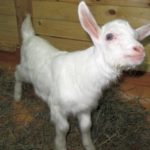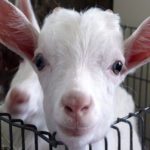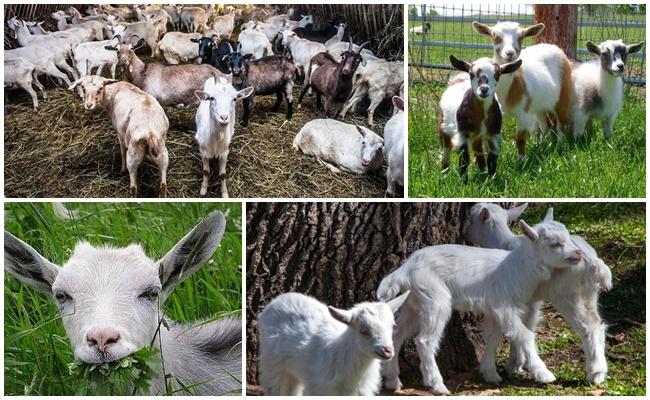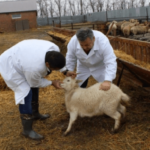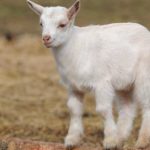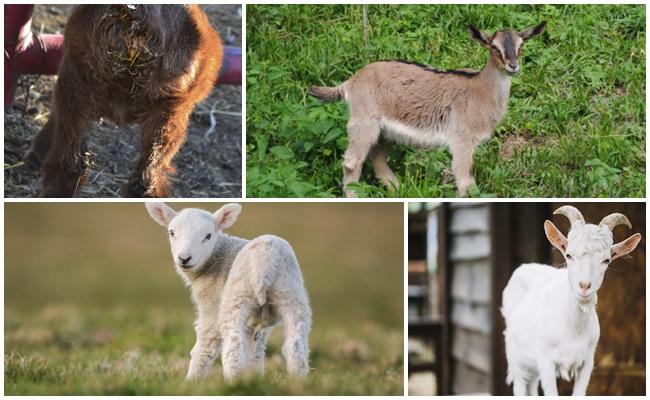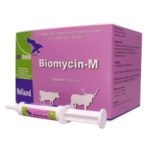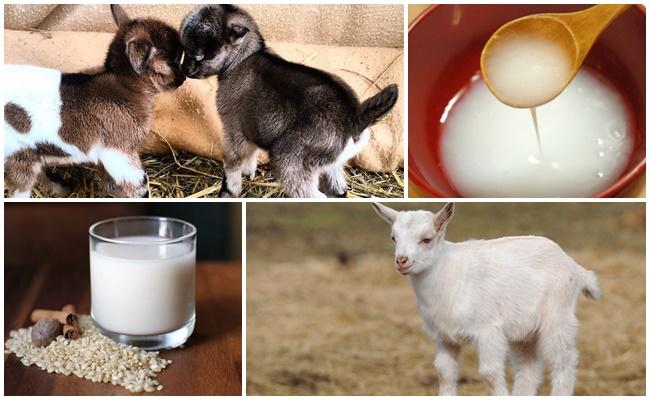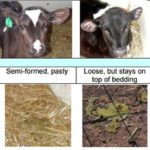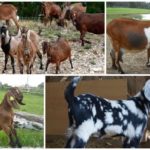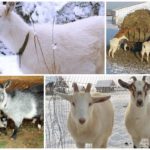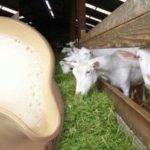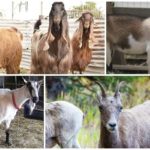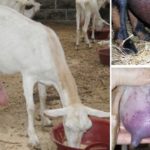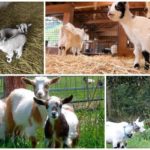Diarrhea is the passage of softened or liquid feces associated with indigestion. Normal feces in goats look like hard balls, but with infectious diseases of the digestive tract, poor feeding and maintenance, the feces change consistency. In adults, diarrhea reduces milk production, and young animals can die from intoxication, so it is important to know the causes of diarrhea in kids and goats, and how to treat a sick animal.
Causes of diarrhea in goats and kids
Most often, goats suffer from diarrhea. Their digestive tract has not yet adapted to living conditions, so even insignificant pathogens provoke a malfunction of the stomach and intestines. Adult goats already have immunity against common infections, but kids have not yet developed it.
But also an adult goat may experience diarrhea. The disease becomes inevitable when the owner feeds the animal low-quality, moldy food and does not vaccinate in a timely manner. Diarrhea is often observed in pregnant and postpartum goats, which is associated with exhaustion of the body and a weakened immune system.
Improper feeding
Although goats are not capricious in their diet, poor quality food is the most common cause of diarrhea. Moreover, diarrhea can be both an independent pathology and a symptom of a malfunction of the digestive organs. Diarrhea in kids and adults occurs due to:
- mold and rotting food;
- the presence of dirt and debris in the feed;
- traces of agricultural pesticides in forage grass;
- penetration of disinfectants and other household toxins into food;
- the presence of poisonous herbs in the pasture;
- sharp autumn and spring changes in diet;
- excess silage and other succulent feed with high acidity in the diet;
- insufficient inclusion of hay in the diet.
Inflammation of the gastrointestinal tract
Kids can diarrhea if gastritis, colitis, enteritis and other non-infectious inflammatory pathologies of the digestive tract occur.
These diseases occur due to:
- poor quality nutrition;
- the presence in the diet of foods that cause fermentation in the digestive tract;
- high percentage of silage in the diet;
- sudden change in diet;
- premature transfer of kids to adult food;
- feeding goat kids with milk from a goat suffering from mastitis;
- exposure to stress factors;
- sunstroke, overheating of the body;
- retinol (vitamin A) deficiency;
- drinking dirty and cold water.
In sick kids and goats, the appetite decreases, or even disappears altogether. Diarrhea periodically gives way to constipation. The feces look like cow pats with blood clots, mucus clots, and food particles.
Non-infectious inflammatory pathologies are not accompanied by fever. Body temperature is slightly increased, sometimes even slightly below normal.
Infectious diseases
Diarrhea in kids can be accompanied by dangerous infectious pathologies listed in the table.
| Disease | Flow form | Symptoms |
| colibacillosis | septic | body temperature 41-42 °C, rapid and shallow breathing, redness of mucous tissues, grinding of teeth, foaming at the mouth, convulsions and paralysis |
| enteritic | feces with blisters, mucus and blood, reddish urine | |
| pasteurellosis | lightning fast | trembling, falling to the ground, death in a few minutes |
| acute | lethargy, weak appetite, temperature 41-42 °C, mucous and purulent discharge from the nose, cough, convulsions, death after 3-5 days | |
| subacute | rhinitis, pneumonia, swelling of the chin and neck, after 2-3 weeks it may become chronic | |
| chronic | anemia, exhaustion, inflammation of the joints of the extremities | |
| salmonellosis | acute | lethargy, temperature about 41 °C, rapid breathing, tachycardia, weak appetite, blood streaks and white lumps in feces, death occurs after 3-5 days |
| subacute | lack of appetite |
Worms and parasites in goats
Baby goats infected with helminths and protozoan parasites are vilified.Infection occurs nutritionally: infected individuals defecate in feces containing microorganisms, and healthy goats eat food that has become infected with a parasite.
The table shows common helminths that affect goats and kids.
| Parasitic disease | Provoking parasites | Localization and features of the lesion |
| moniesiosis | tapeworm up to 8 m | the source of infection is grass, the parasite lives in the intestines |
| alveococcosis | larvae that cause jaundice | affect the liver |
| fascioliasis | flatworms that cause jaundice | live in the bile ducts, diarrhea is dark in color due to the presence of bilirubin |
| paramphistomatosis | helminth larvae, the main host of which is mollusks | source of infection is grass; adult helminths infect the stomach and duodenum |
| dictyocaulosis | roundworm up to 15 cm | adult helminths inhabit the lungs, larvae migrate to the intestines |
| strongyloidiasis | thread nematode | lives in the intestines |
Signs of the disease
The main sign of diarrhea in kids is frequent defecation, which produces mushy or watery feces. Other symptoms are possible, depending on the cause of diarrhea:
- nausea, urge to vomit;
- pain when touching the abdomen;
- weak or absent appetite;
- lethargy, drowsiness;
- frequent and short breathing;
- tachycardia, arrhythmia;
- excessive gas formation;
- increased or decreased body temperature.
Diarrhea is a dangerous condition for both an adult goat and a kid.It leads to dehydration, disruption of metabolism, intestinal microflora and nervous system functioning. An adult animal loses weight and produces less milk. If a newborn goat has diarrhea, it begins to become intoxicated, and if left untreated, the animal dies.
When a kid's loose stool is infectious, the stool is dark or green in color with streaks of blood and gives off a rotting smell. If the diarrhea is non-infectious, then the color and consistency of the feces are different, mucous and foamy inclusions, and food particles are possible.
Methods of treating the disease
A sick animal is not fed for about 8 hours. Every 3 hours, give a glass of warm saline or oak decoction. It is advisable to give the goat 2-3 tablespoons of castor oil. Similar first aid is given to a kid, but castor oil should not be given.
The sick animal is isolated, since diarrhea may be a symptom of an infectious lesion. And the room where the goat was located is disinfected.
Medications
Against infectious diarrhea, use a 1% solution of the antiseptic "Rivanol" or a 0.1% antimicrobial drug "Furazolidone". Antibiotics “Biomycin”, “Levomycetin”, “Biomycin” work well. The dosage is prescribed by a veterinarian. Goats can be given antibiotics “Sultasin” and “Fthalazol”. Dose – 200 mg per 1 kg of body weight.
Medicines against helminthiasis in kids:
- for moniesiosis - “Panacur” (22 mg per 1 kg), “Cambendazole” (25 mg per 1 kg);
- for fascioliasis - “Politrem” in food (0.14 g per 1 kg), “Ivomek” subcutaneously (1 ml per 50 kg);
- for paramphistomatosis - the drugs “Panacur” and “Cambendazole”;
- for dictyocaulosis - “Ivomek” subcutaneously (0.2 mg per 1 kg) and “Panacur”;
- for strongyloidiasis - “Nilverm” (100 mg per 1 kg).
Traditional methods
The first way to combat diarrhea in goats at home is oak decoction. A tablespoon of bark is poured into a glass of hot water. Place in a steam bath and hold until the liquid acquires a rich brown color. The solution is filtered, boiled water is added to 300 ml. The goat is given the product 3 times a day before it can be fed.
You can use rice water. A glass of rice is soaked in water for 10 hours. Pour 1 liter of water, salt, cook for 1 hour over low heat. Strain, add 50 g of sugar to the liquid and bring to a boil. A sick animal is given a quarter glass of broth every 2 hours.
It is recommended to give chamomile decoction to water for small goats for diarrhea. It is prepared in the same way as oak.
Preventive actions
To prevent diarrhea in kids, follow these rules:
- Competently prepare diets for animals. They provide high-quality and balanced food.
- Maintain cleanliness and order in the barn. Cleaning is carried out monthly.
- Give goats clean and fresh drinking water.
- Provide comfortable temperature and ventilation in the barn. Goats should not suffer from cold, stuffiness, or high humidity.
- The diet of the kids is changed gradually.
- They do not organize grazing on swampy pastures.
- To strengthen the immune system, goat kids are given vitamin and mineral supplements.
What to do with milk from sick goats?
Diarrhea negatively affects not only the quantity, but also the quality of milk. It contains few nutrients, so it is better to feed kids with milk from a healthy goat.
If diarrhea is caused by an infectious disease, then pathogens may be contained in the milk of a sick goat. It is better to dispose of such a product. If it’s a pity to do this, then you can use it only after boiling.



